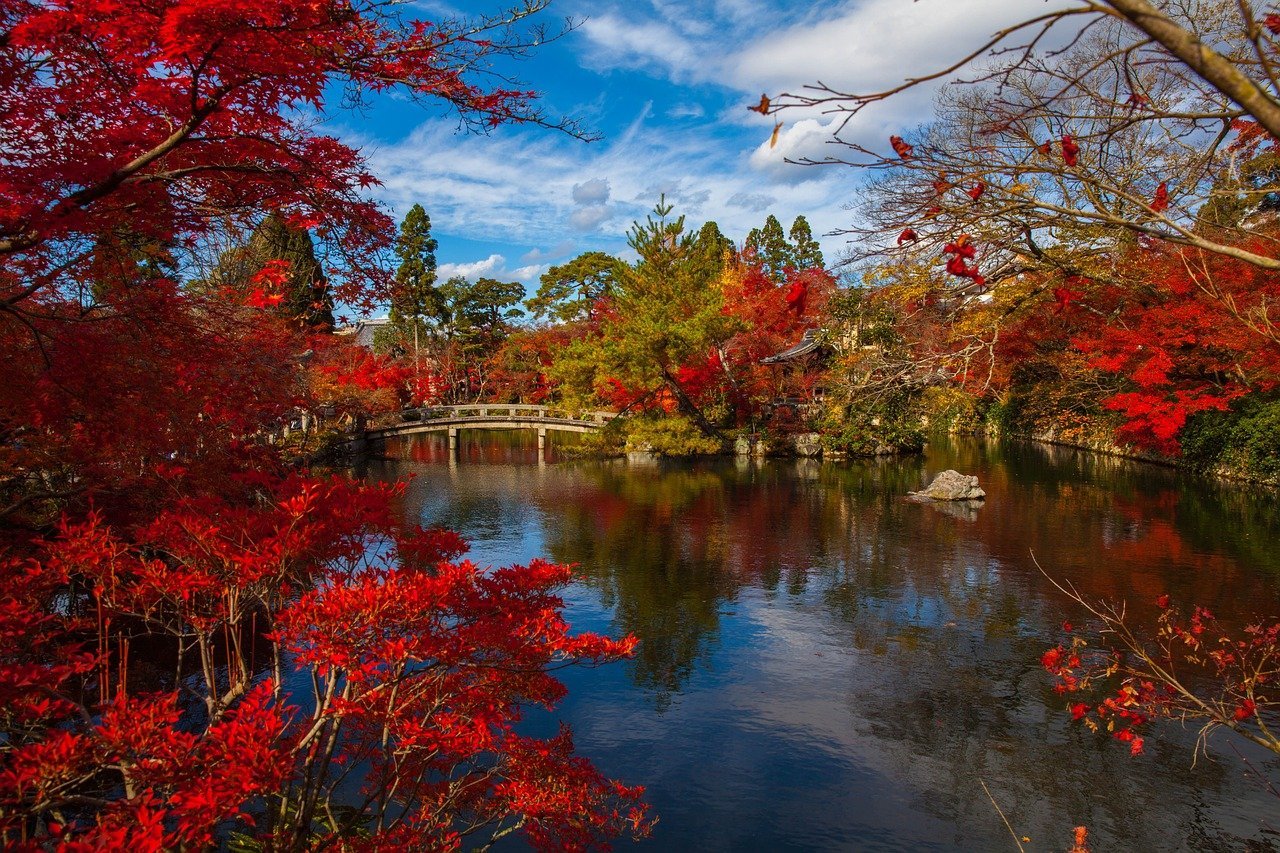Japan is the Land of the Rising Sun and an extraordinary honeymoon destination, where ancient traditions meet modern marvels, creating an unforgettable experience! Japan offers breathtaking landscapes, luxurious accommodations, delectable cuisine, and a rich cultural heritage. Explore the serene temples, indulge in hot springs, and experience the bustling cities, all while staying in top-tier hotels. Japan’s unique blend of old and new provides the perfect setting for a magical honeymoon!
This ultimate 20-day Japan honeymoon itinerary will guide you through a captivating journey of romance, adventure, and relaxation. From the vibrant streets of Tokyo to the tranquil temples of Kyoto, and from the scenic beauty of Hakone to the historic charm of Hiroshima, this guide has everything you need to plan the perfect honeymoon. And with the help of Travels Jinn, your dream vacation is just a click away!
DAY 1-4: EXPLORING TOKYO
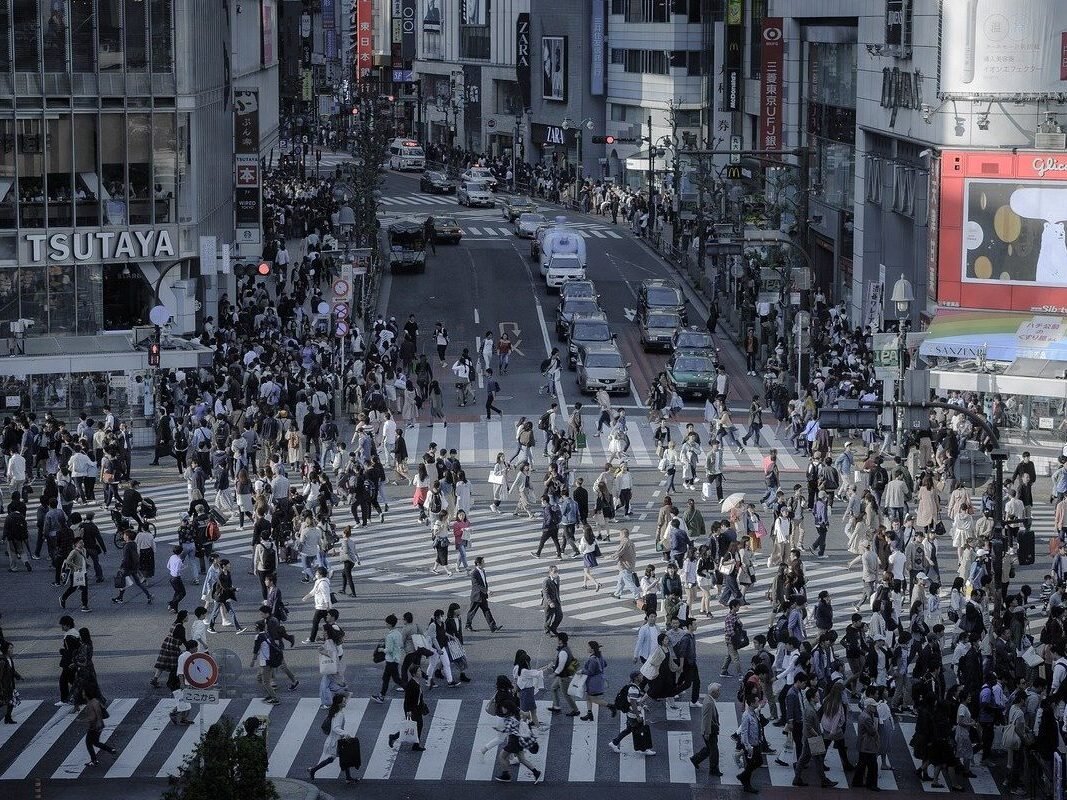
Tokyo: A City of Contrasts
Your Japan honeymoon adventure begins as you arrive at Narita or Haneda Airport in Tokyo. The city’s dynamic energy, blending futuristic skyscrapers with serene gardens, makes it an exciting start to your journey. Tokyo, the capital of Japan, is known for its vibrant neighborhoods, cultural landmarks, and world-class cuisine.
Check into a luxury hotel like The Peninsula Tokyo or Aman Tokyo, where you can unwind and soak in the urban ambiance.
Most Important Things to See and Do in Tokyo
Sensō-ji Temple: Tokyo’s oldest temple, is a major cultural landmark located in Asakusa. Founded in 645 AD, it is dedicated to Kannon, the Buddhist goddess of mercy. The temple features the grand Kaminarimon (Thunder Gate) with its giant red lantern, a bustling Nakamise shopping street leading to the main hall, and a five-story pagoda.
Tokyo Tower: inspired by the Eiffel Tower, stands at 333 meters and offers panoramic views of the city. Completed in 1958, it serves as a television broadcasting tower and a popular tourist attraction. Visitors can explore its main observatory and special observatory for stunning cityscapes, especially beautiful at night. The tower also houses museums, restaurants, and shops, making it a multifaceted destination.
Meiji Shrine: located in Shibuya, is a Shinto shrine dedicated to Emperor Meiji and Empress Shoken. Completed in 1920, it is surrounded by a serene forest, creating a peaceful retreat in the heart of Tokyo. The shrine complex includes the main hall, beautiful gardens, and a treasure museum. It is a popular site for traditional Japanese weddings and cultural ceremonies.
Shibuya Crossing: is one of the world’s busiest pedestrian intersections, known for its iconic “scramble” where hundreds of people cross simultaneously from all directions. It is a symbol of Tokyo’s vibrant urban life. Surrounding the crossing are numerous shopping centers, entertainment venues, and the famous statue of Hachikō, the loyal dog. The crossing is especially captivating at night with its neon lights and bustling energy.
Tsukiji Outer Market: is a food lover’s paradise, offering a variety of fresh seafood, local produce, and traditional Japanese street food. Although the inner wholesale market relocated to Toyosu, the outer market remains a lively area where visitors can taste sushi, sashimi, and other culinary delights. It provides an authentic experience of Tokyo’s food culture and culinary heritage.
Akihabara: known as Tokyo’s “Electric Town,” is a hub for electronics, anime, manga, and gaming culture. It features numerous shops selling the latest gadgets, video games, and collectibles. Akihabara also has themed cafes, arcades, and anime-related events, making it a paradise for tech enthusiasts and pop culture fans.
Ueno Park: is one of Tokyo’s largest and most popular public parks, home to museums, temples, and a zoo. Established in 1873, it is famous for its cherry blossoms in spring, attracting visitors for hanami (flower viewing) parties. The park includes the Tokyo National Museum, Ueno Zoo, and Shinobazu Pond, offering a mix of cultural, recreational, and natural attractions.
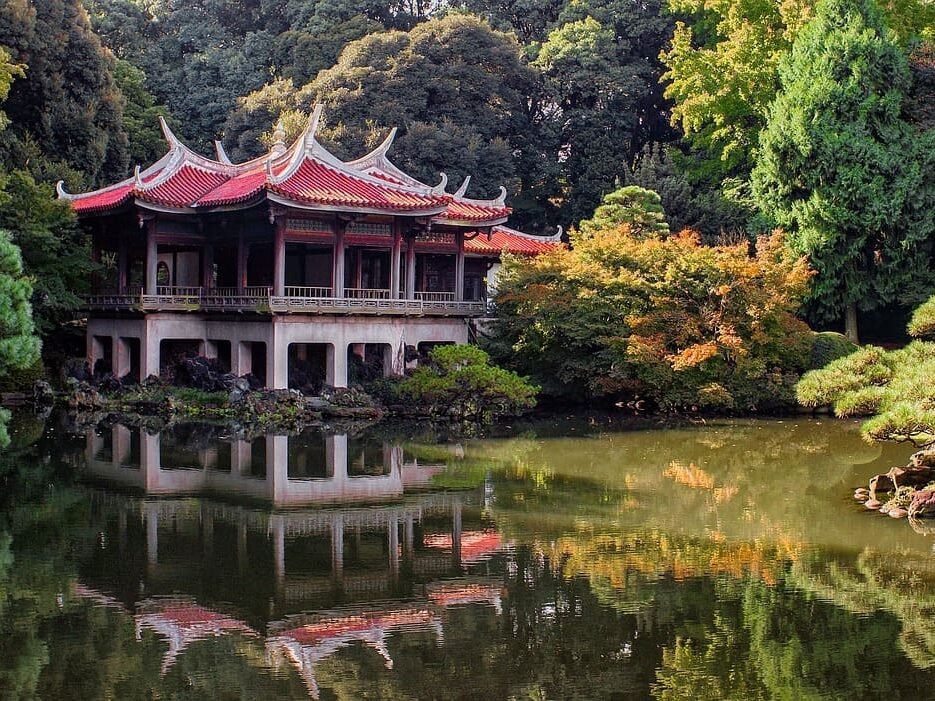
Japan Honeymoon Itinerary
Day 1: Settle into your hotel – The Peninsula Tokyo – and take a leisurely stroll through the historic Asakusa district. Visit Senso-ji Temple, Tokyo’s oldest temple, and enjoy a romantic dinner at Sushi Saito, one of the city’s top sushi restaurants.
Day 2: Spend the day exploring the bustling district of Shibuya. Take a walk through Yoyogi Park and visit the Meiji Shrine. In the evening, head to the observation deck at Tokyo Skytree for breathtaking views of the city. Enjoy dinner at the New York Grill, famous for its skyline views.
Day 3: Discover the fashionable neighborhood of Ginza, known for its luxury shopping and dining. Visit the Imperial Palace and its beautiful East Gardens. For dinner, experience traditional kaiseki cuisine at Nihonryori RyuGin.
Day 4: Take a day trip to Nikko, a UNESCO World Heritage site known for its stunning temples and natural beauty. Return to Tokyo and relax with a couple’s spa treatment at your hotel.
Recommended Hotels and Restaurants
Hotels: The Peninsula Tokyo, Aman Tokyo
Restaurants: Sushi Saito, New York Grill, Nihonryori RyuGin
DAY 5-7: ROMANTIC GETAWAY IN HAKONE
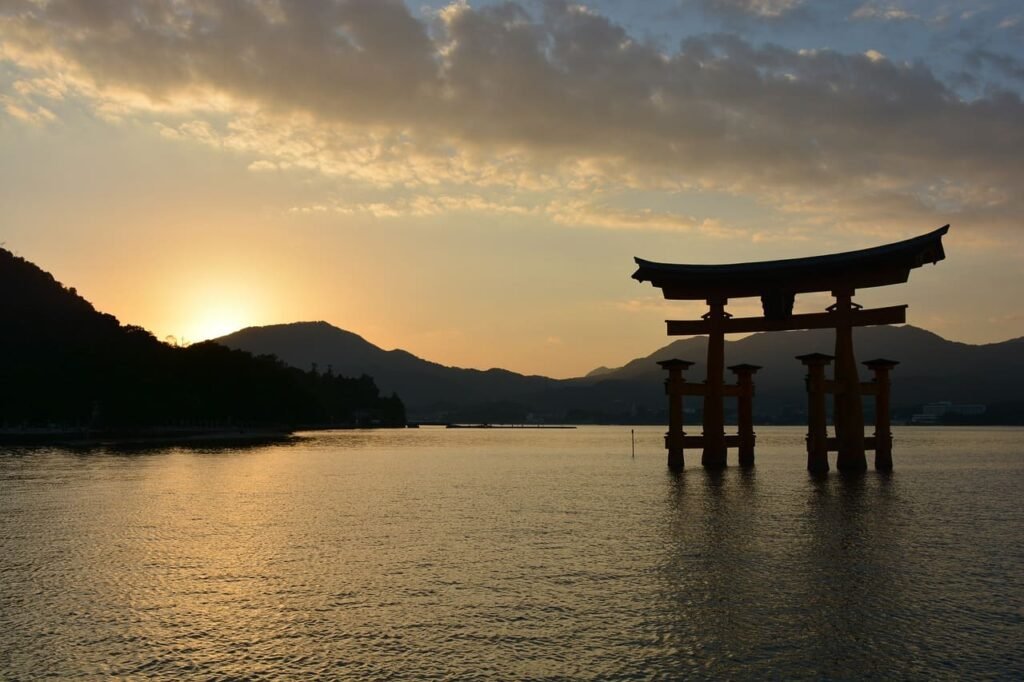
Hakone: Nature and Relaxation
Hakone, known for its hot springs, scenic views of Mount Fuji, and traditional ryokan inns, is a perfect romantic getaway. It’s located just a short train ride from Tokyo, offering a serene escape from the bustling city.
Check into Gora Kadan or Hakone Ginyu, both offering luxurious accommodations with private onsens.
Most Important Things to See and Do in Hakone
The Hakone Open-Air Museum: Japan’s first open-air museum, showcases a vast collection of modern and contemporary sculptures set against a stunning natural backdrop. Opened in 1969, it features works by renowned artists like Picasso and Henry Moore. The museum also includes indoor galleries, foot baths, and a scenic garden, offering a unique blend of art and nature.
Lake Ashi: or Ashinoko, is a picturesque crater lake formed in the caldera of Mount Hakone. Known for its stunning views of Mount Fuji, the lake offers scenic cruises on traditional Japanese pirate ships. Visitors can explore nearby attractions like Hakone Shrine and the Komagatake Ropeway, which provides panoramic views of the surrounding mountains and valleys.
Hakone Shrine: nestled in the forest along the shores of Lake Ashi, is a Shinto shrine famous for its iconic red torii gate that stands in the lake. Established in 757 AD, the shrine is dedicated to the kami (spirit) of the mountains. Visitors can enjoy the serene atmosphere, walk along the cedar-lined path, and experience traditional rituals and festivals.
Owakudani: meaning “Great Boiling Valley,” is a volcanic valley with active sulfur vents and hot springs. Formed during the last eruption of Mount Hakone 3,000 years ago, it offers a unique geological landscape. Visitors can take the Hakone Ropeway to enjoy views of the steaming vents, try the famous black eggs boiled in the sulfuric hot springs, and explore the hiking trails.
Hakone Yumoto Onsen: is one of the oldest and most famous hot spring areas in Hakone. Known for its therapeutic waters, the area boasts numerous ryokan (traditional Japanese inns) offering luxurious hot spring baths. Visitors can enjoy a relaxing soak, traditional kaiseki cuisine, and the tranquil ambiance of a traditional onsen experience.
Hakone Glass no Mori: or the Venetian Glass Museum, features beautiful Venetian glass art and a charming garden. Opened in 1996, the museum showcases delicate glass sculptures, vases, and chandeliers. Visitors can explore the garden, participate in glass-making workshops, and enjoy live performances of classical music.
Gora Park: is a French-style landscape park located in the Gora area of Hakone. Opened in 1914, it features beautifully manicured gardens, fountains, a tea house, and a greenhouse with tropical plants. The park offers a peaceful retreat and a perfect spot for a leisurely stroll, with seasonal flowers and scenic views.
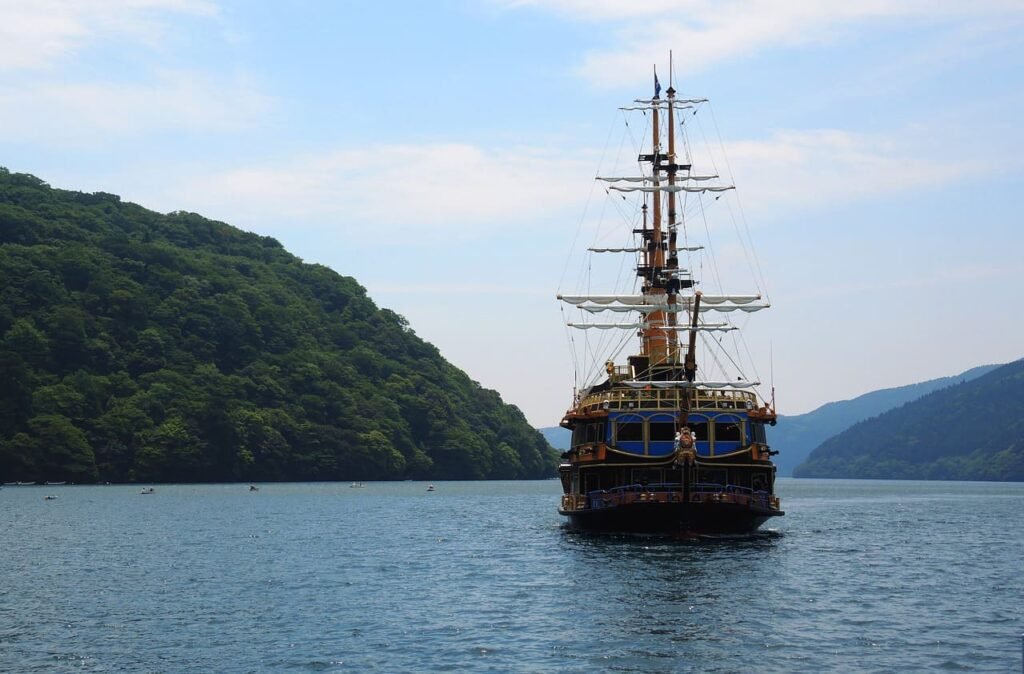
Japan Honeymoon Itinerary
Day 5: Travel to Hakone and check into your ryokan. Spend the afternoon soaking in a private onsen and enjoying the tranquility. In the evening, savor a traditional kaiseki dinner at your ryokan.
Day 6: Explore Hakone’s attractions, starting with a boat cruise on Lake Ashi. Visit the Hakone Shrine, known for its iconic red torii gate. Take the Hakone Ropeway for stunning views of Mount Fuji and the Owakudani Valley. Enjoy dinner at Itoh Dining by Nobu.
Day 7: Visit the Hakone Open-Air Museum, which features a unique blend of art and nature. Return to your ryokan for a relaxing evening.
Recommended Ryokans
Ryokans: Gora Kadan, Hakone Ginyu
Dining: Kaiseki dinner at your ryokan, Itoh Dining by Nobu
DAY 8-12: HISTORIC KYOTO
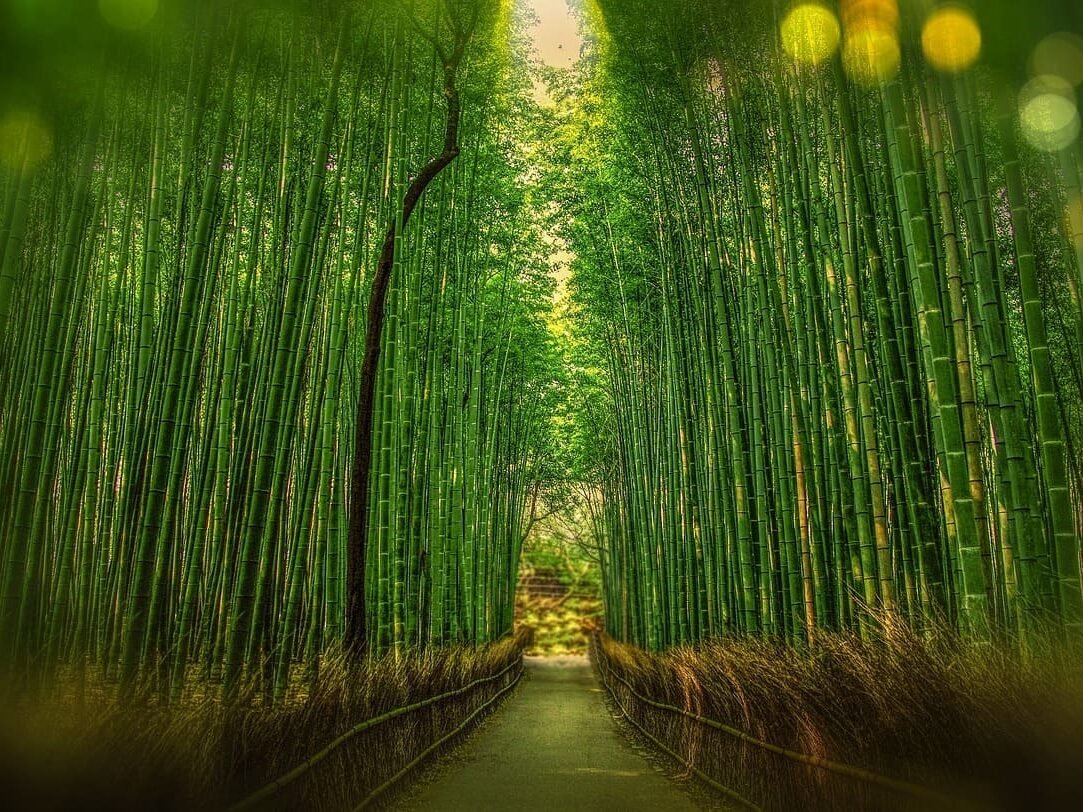
Kyoto: The Heart of Japan’s Culture
Kyoto, with its well-preserved temples, traditional tea houses, and beautiful gardens, is the cultural heart of Japan. It offers a glimpse into the country’s rich history and heritage.
Check into The Ritz-Carlton, Kyoto or Hoshinoya Kyoto, both offering luxurious stays along the picturesque Kamogawa River.
Most Important Things to See and Do in Kyoto
Fushimi Inari Taisha: is Kyoto’s most iconic Shinto shrine, dedicated to Inari, the god of rice and agriculture. Established in 711 AD, it is renowned for its thousands of vibrant red torii gates that form a scenic pathway through the wooded forest of Mount Inari. The shrine complex includes numerous smaller shrines, statues of foxes (Inari’s messengers), and offers panoramic views of Kyoto.
Kinkaku-ji: or the Golden Pavilion, is a stunning Zen Buddhist temple covered in gold leaf, set amidst a serene pond and meticulously landscaped gardens. Originally built in 1397 as a retirement villa for shogun Ashikaga Yoshimitsu, it was later converted into a temple. The three-story structure features different architectural styles and is a prime example of Japanese garden design.
Kiyomizu-dera: a UNESCO World Heritage site, is a historic temple founded in 778 AD. Famous for its large wooden stage that juts out from the main hall, it offers breathtaking views of Kyoto. The temple’s name means “Pure Water Temple,” derived from the Otowa Waterfall that runs beneath it. Visitors can drink from the waterfall’s three streams, believed to grant health, longevity, and academic success.
The Arashiyama Bamboo Grove: is a mesmerizing natural forest located in the Arashiyama district. Walking through the towering bamboo stalks, which sway gently in the wind, creates a serene and otherworldly experience. Nearby attractions include the Tenryu-ji Temple, a UNESCO World Heritage site, and the picturesque Togetsukyo Bridge.
Nijo Castle: a UNESCO World Heritage site, was built in 1603 as the residence of Tokugawa Ieyasu, the first shogun of the Edo period. The castle complex includes the Ninomaru Palace, known for its “nightingale floors” that chirp when walked upon to guard against intruders, and beautiful gardens. The palace interiors are adorned with elaborate wood carvings and gold leaf.
The Gion District: is Kyoto’s famous geisha district, known for its traditional wooden machiya houses, teahouses, and narrow alleyways. Visitors can stroll along Hanami-koji Street, spot geiko and maiko (apprentice geisha) in their traditional attire, and enjoy performances of traditional arts. The district also hosts the Gion Matsuri, one of Japan’s most famous festivals.
The Philosopher’s Path: is a scenic pedestrian route along the canal, lined with hundreds of cherry trees that bloom in spring. Named after the philosopher Nishida Kitaro, who is said to have meditated while walking this path, it connects Ginkaku-ji (Silver Pavilion) with Nanzen-ji Temple. The path is a peaceful retreat and offers picturesque views throughout the year.
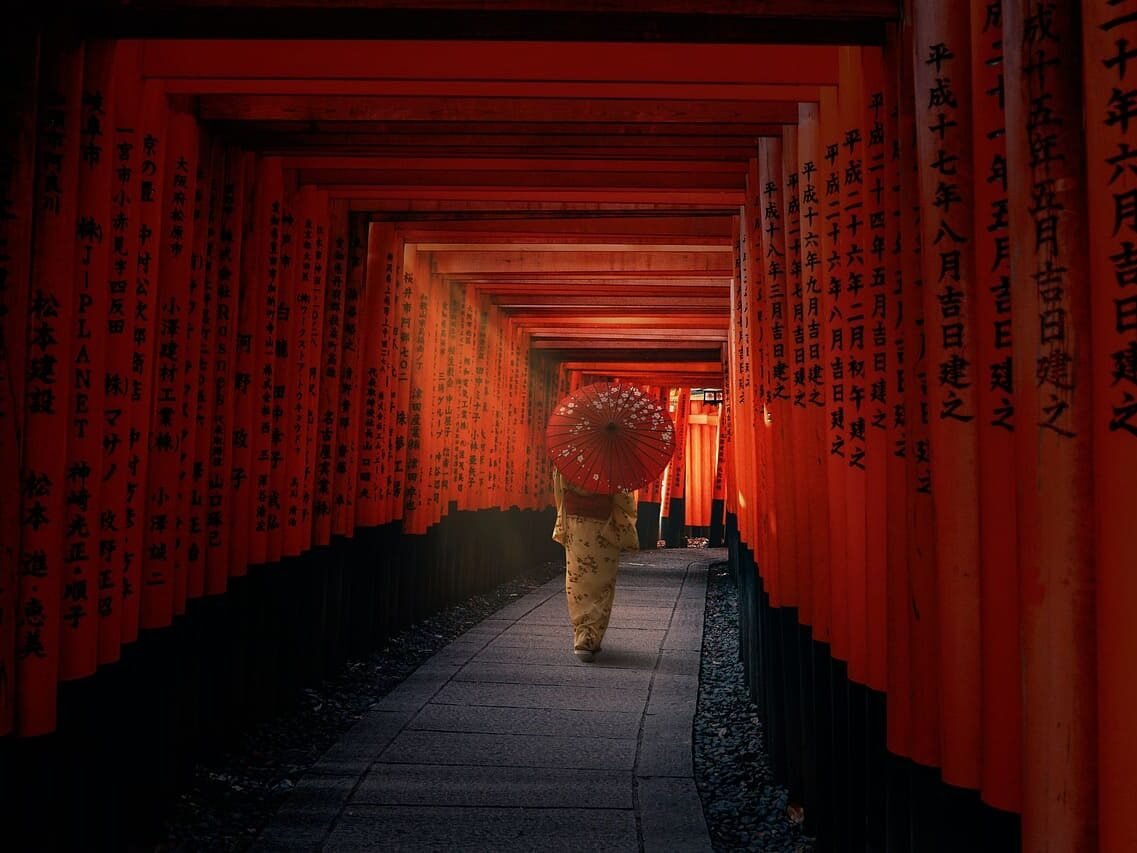
Japan Honeymoon Itinerary
Day 8: Travel to Kyoto and settle into your hotel. Take a romantic evening stroll through the historic Gion district, known for its traditional wooden machiya houses and geisha culture. Enjoy dinner at Kikunoi, a renowned kaiseki restaurant.
Day 9: Start your day with a visit to Kinkaku-ji (the Golden Pavilion). Continue to Ryoan-ji, famous for its rock garden, and then to Nijo Castle, an impressive example of feudal-era architecture. For dinner, head to Hyotei, a Michelin-starred restaurant with a 400-year history.
Day 10: Explore the Fushimi Inari Shrine, with its iconic torii gate pathway. Visit the serene Arashiyama Bamboo Grove and the nearby Tenryu-ji Temple. Enjoy a riverside dinner at Arashiyama Yoshimura, known for its soba noodles.
Day 11: Take a day trip to Nara, home to the majestic Todai-ji Temple and its giant bronze Buddha. Feed the friendly deer in Nara Park. Return to Kyoto for a romantic dinner at Gion Karyo.
Day 12: Enjoy a traditional tea ceremony and visit the beautiful gardens of Heian Shrine. Spend your afternoon shopping for souvenirs in the Nishiki Market. End your day with a private dinner cruise on the Kamogawa River.
Recommended Luxury Hotels
Hotels: The Ritz-Carlton, Kyoto, Hoshinoya Kyoto
Dining: Kikunoi, Hyotei, Arashiyama Yoshimura
DAY 13-15: DISCOVERING HIROSHIMA AND MIYAJIMA
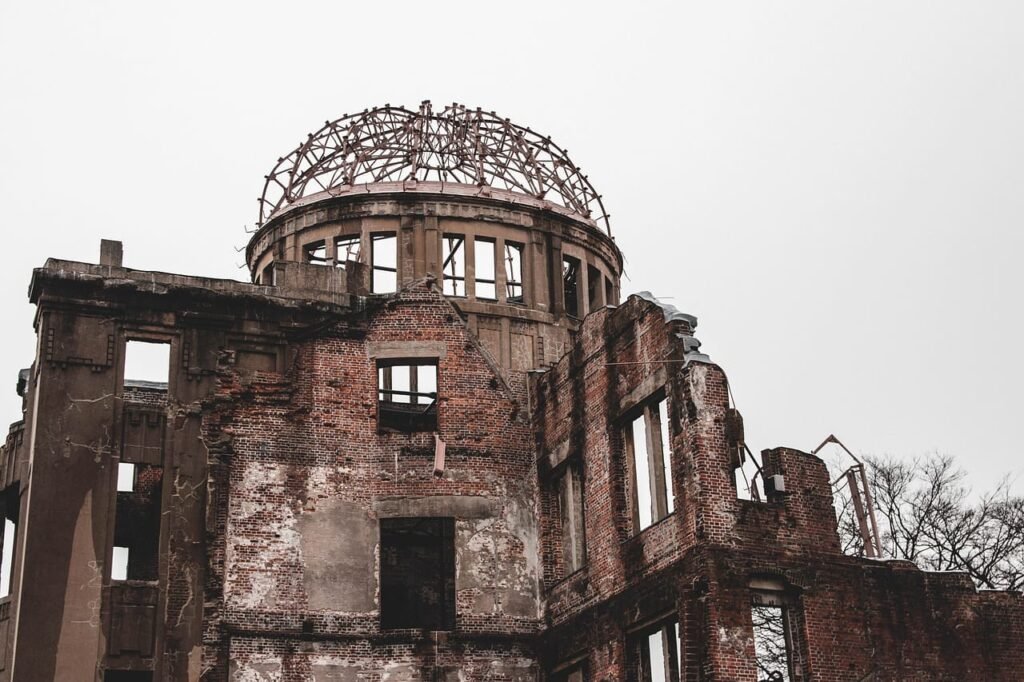
Hiroshima: A City of Peace
Hiroshima, a city known for its tragic past and remarkable recovery, offers poignant historical sites and beautiful landscapes. Nearby Miyajima Island is famous for its “floating” torii gate and serene beauty.
Check into the Sheraton Grand Hiroshima Hotel or the ANA Crowne Plaza Hiroshima for a comfortable stay.
Most Important Things to See and Do in Hiroshima and Miyajima
Hiroshima Peace Memorial Park: is dedicated to the victims of the atomic bombing on August 6, 1945. The park features the Atomic Bomb Dome, one of the few buildings that survived the blast, and the Peace Memorial Museum, which provides a poignant look at the bombing’s impact through exhibits and artifacts. The park also includes the Cenotaph for A-Bomb Victims and the Children’s Peace Monument.
Located on Miyajima Island, Itsukushima Shrine is famous for its “floating” torii gate, which appears to be standing in the sea during high tide. The shrine, a UNESCO World Heritage site, dates back to the 6th century and is known for its unique Shinden-zukuri architecture. The complex includes several buildings connected by boardwalks over the water, creating a serene and picturesque setting.
The Miyajima Ropeway offers a scenic ride up to Mount Misen, the highest peak on Miyajima Island. From the summit, visitors can enjoy panoramic views of the Seto Inland Sea and surrounding islands. The mountain is also home to various hiking trails, historical sites like the Reikado Hall (Hall of the Eternal Flame), and abundant wildlife, including wild deer.
Shukkeien Garden: located in Hiroshima, is a beautifully landscaped garden dating back to 1620. Designed to mimic a miniature version of West Lake in Hangzhou, China, the garden features a central pond, teahouses, and a network of walking paths. It is a tranquil retreat in the city, showcasing seasonal beauty with cherry blossoms in spring and colorful foliage in autumn.
Originally constructed in the 1590s, Hiroshima Castle was destroyed in the atomic bombing but was rebuilt in 1958. The reconstructed castle houses a museum that chronicles Hiroshima’s history, samurai culture, and the castle’s own past. The castle grounds include a shrine, gardens, and offers views of the city from the top floor.
Daisho-in Temple: located on Miyajima Island, is an important Shingon Buddhist temple. It features a variety of halls, statues, and a picturesque garden. The temple is known for its spiritual significance and its scenic beauty, especially during the autumn foliage season. Highlights include the Henjokutsu Cave, filled with 88 icons representing the Shikoku Pilgrimage.
Okonomimura: or “Okonomiyaki Village,” is a must-visit for food lovers. This building houses numerous stalls specializing in Hiroshima-style okonomiyaki, a savory pancake made with layers of batter, cabbage, noodles, and various toppings. It’s a great place to sample this local delicacy and experience the vibrant food culture of Hiroshima.
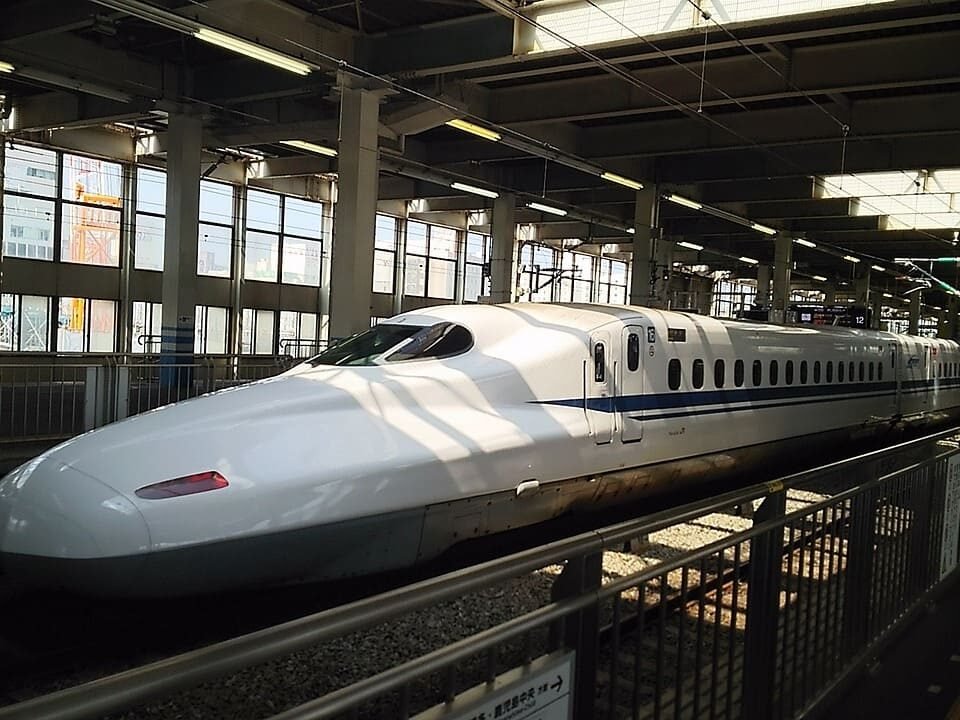
Japan Honeymoon Itinerary
Day 13: Travel to Hiroshima and visit the Hiroshima Peace Memorial Park and Museum, dedicated to the victims of the atomic bomb. In the evening, enjoy okonomiyaki, a local specialty, at Okonomimura.
Day 14: Take a ferry to Miyajima Island. Visit Itsukushima Shrine, known for its iconic torii gate that appears to float on water. Hike up Mount Misen for panoramic views. Return to Hiroshima for dinner at Shoben Tango.
Day 15: Explore Hiroshima Castle and Shukkeien Garden, a beautiful historic garden. Spend your evening at leisure, perhaps taking a romantic walk along the Motoyasu River.
Recommended Hotels
Hotels: Sheraton Grand Hiroshima Hotel, ANA Crowne Plaza Hiroshima
Dining: Okonomimura, Shoben Tango
DAY 16-18: CHARM OF OSAKA
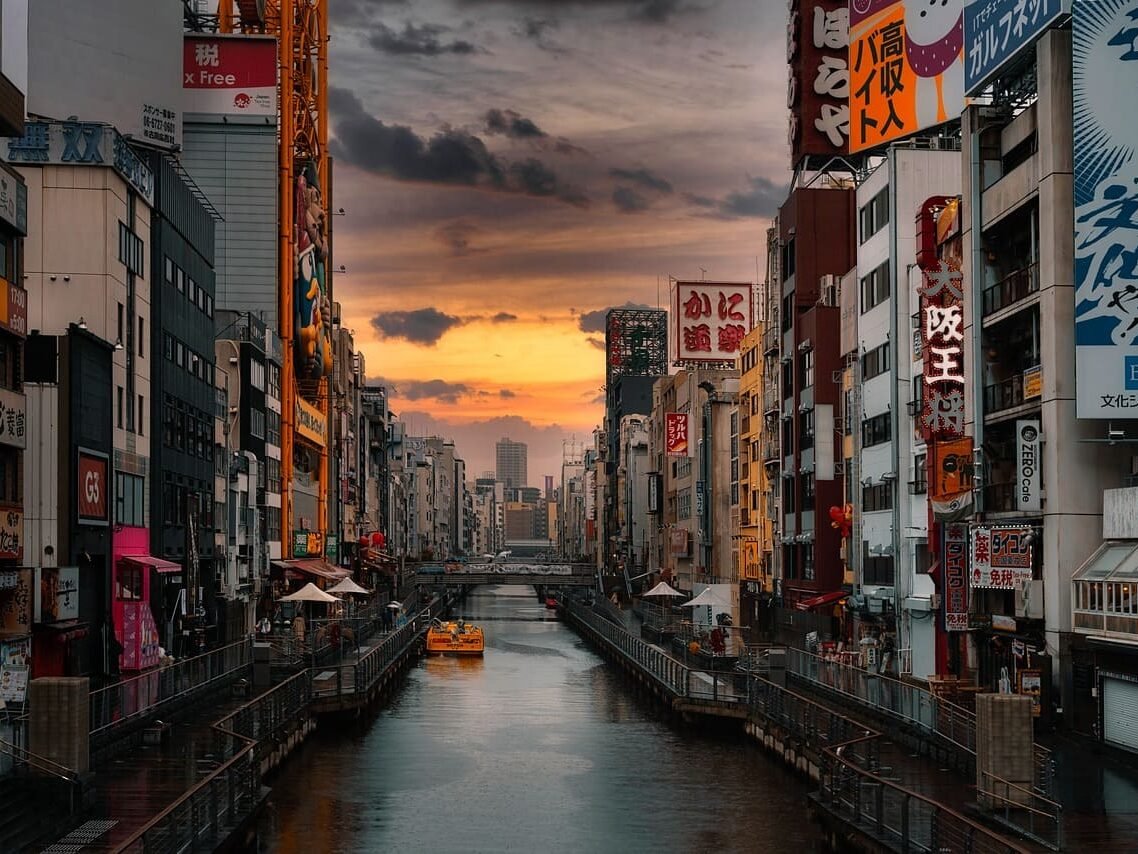
Osaka: Food and Fun
Osaka, known as Japan’s kitchen, offers a vibrant food scene, exciting nightlife, and friendly locals. It’s a city that perfectly combines traditional culture and modern attractions.
Check into the St. Regis Osaka or the Conrad Osaka for a luxurious stay.
Most Important Things to See and Do in Osaka
Osaka Castle: a symbol of the city, is a must-visit historical site. The castle features beautiful grounds with gardens and moats, and the castle museum offers exhibits on the history of Osaka and the castle itself. The top floor provides panoramic views of the city.
Dotonbori is a vibrant entertainment district known for its bright neon lights, giant billboards, and a wide variety of restaurants and street food. It’s a great place to try Osaka’s famous dishes like takoyaki (octopus balls) and okonomiyaki (savory pancakes). The Glico running man sign and the Kani Doraku crab are iconic landmarks.
Shinsaibashi is a long shopping street that offers a mix of international brands, local boutiques, and department stores. It’s a shopper’s paradise and a great place to experience the bustling atmosphere of Osaka.
Universal Studios Japan is a popular theme park featuring attractions based on movies and characters like Harry Potter, Jurassic Park, and Minions. It’s a fun destination for families and thrill-seekers.
The Umeda Sky Building is a striking skyscraper with a unique “Floating Garden Observatory” on the 39th floor. Visitors can enjoy stunning views of Osaka from the open-air deck, especially beautiful at sunset and night.
Kuromon Ichiba Market is a lively market known for its fresh seafood, produce, and street food. It’s a fantastic place to sample local delicacies and enjoy the vibrant market atmosphere.
Osaka Aquarium Kaiyukan is one of the largest aquariums in the world, featuring a massive tank that houses whale sharks, manta rays, and various other marine life. The exhibits take visitors on a journey through different marine habitats.
Sumiyoshi Taisha is one of Japan’s oldest Shinto shrines, known for its unique architectural style and beautiful grounds.
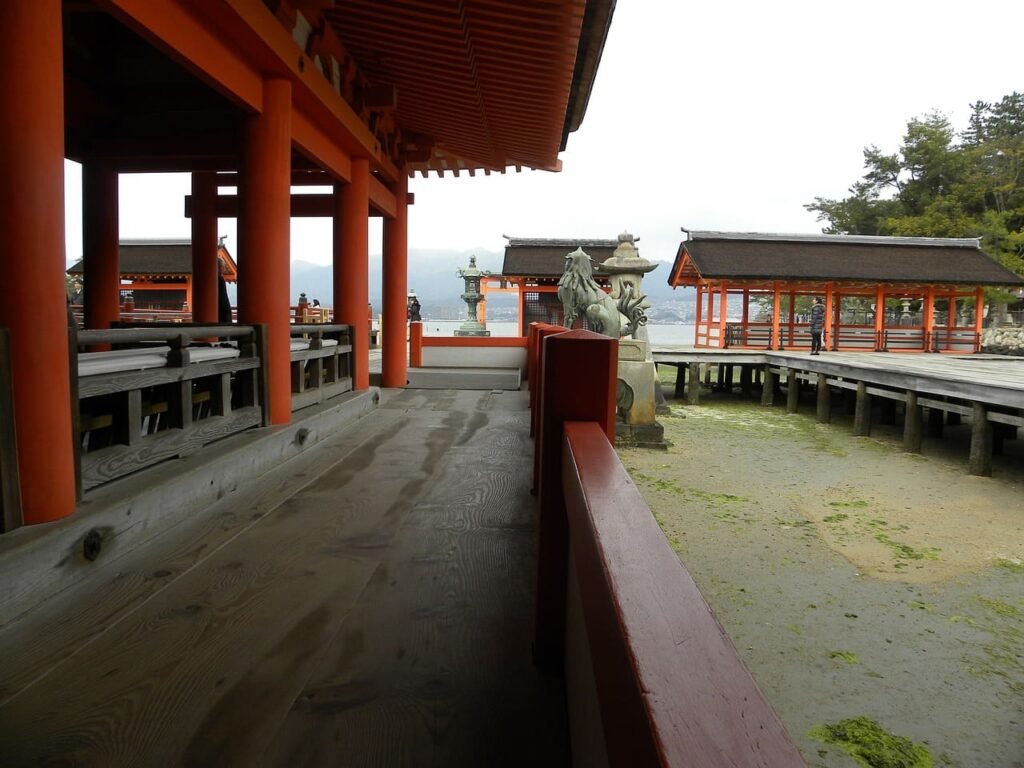
Japan Honeymoon Itinerary
Day 16: Arrive in Osaka and visit Osaka Castle, a symbol of the city’s rich history. Explore the surrounding Nishinomaru Garden. For dinner, head to Dotonbori, famous for its street food and neon lights. Try takoyaki (octopus balls) and okonomiyaki.
Day 17: Spend your day at Universal Studios Japan, enjoying its thrilling rides and attractions. In the evening, dine at Harukoma Sushi, a popular local sushi spot.
Day 18: Visit the Umeda Sky Building for a unique architectural experience and stunning city views. Explore the vibrant shopping district of Shinsaibashi. Enjoy dinner at Hajime, a three-Michelin-star restaurant known for its innovative cuisine.
Recommended Luxury Hotels
Hotels: St. Regis Osaka, Conrad Osaka
Dining: Harukoma Sushi, Hajime
DAY 19-20: FAREWELL IN TOKYO
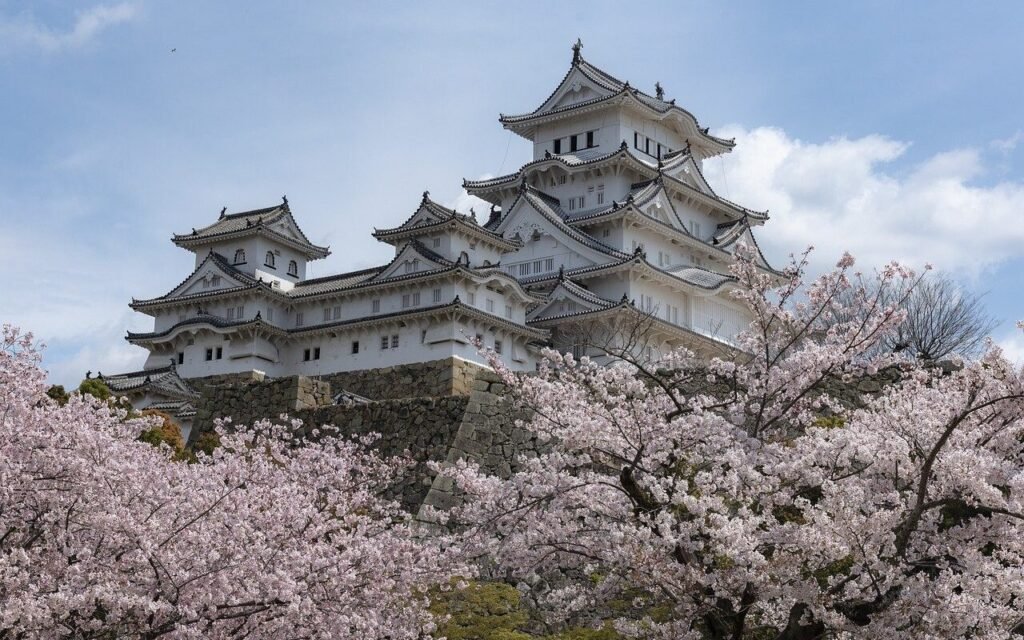
Tokyo: Final Adventures
Return to Tokyo for the final leg of your honeymoon, making the most of the city’s endless attractions and experiences.
Japan Honeymoon Itinerary
Day 19: Travel back to Tokyo and check into your hotel. Spend your day exploring Odaiba, a futuristic waterfront area with shopping, entertainment, and the famous TeamLab Borderless digital art museum. Enjoy a romantic dinner at Il Ristorante – Luca Fantin.
Day 20: Spend your final day in Tokyo at your leisure. Visit the tranquil Hamarikyu Gardens, then enjoy last-minute shopping in the trendy district of Omotesando. End your trip with a farewell dinner at Narisawa, a Michelin-starred restaurant offering an unforgettable culinary experience.
Recommended Hotels
Hotels: The Peninsula Tokyo, Aman Tokyo
Dining: Il Ristorante – Luca Fantin, Narisawa
If you want to discover more about Japan read our Ultimate Japan Guide. Another great option for your Japan Honeymoon is The Seven Star in Kyushu Train, have a look at it!! Book here your flights and your hotels! There are all the price points your want.
Tips for Planning a Japan Honeymoon
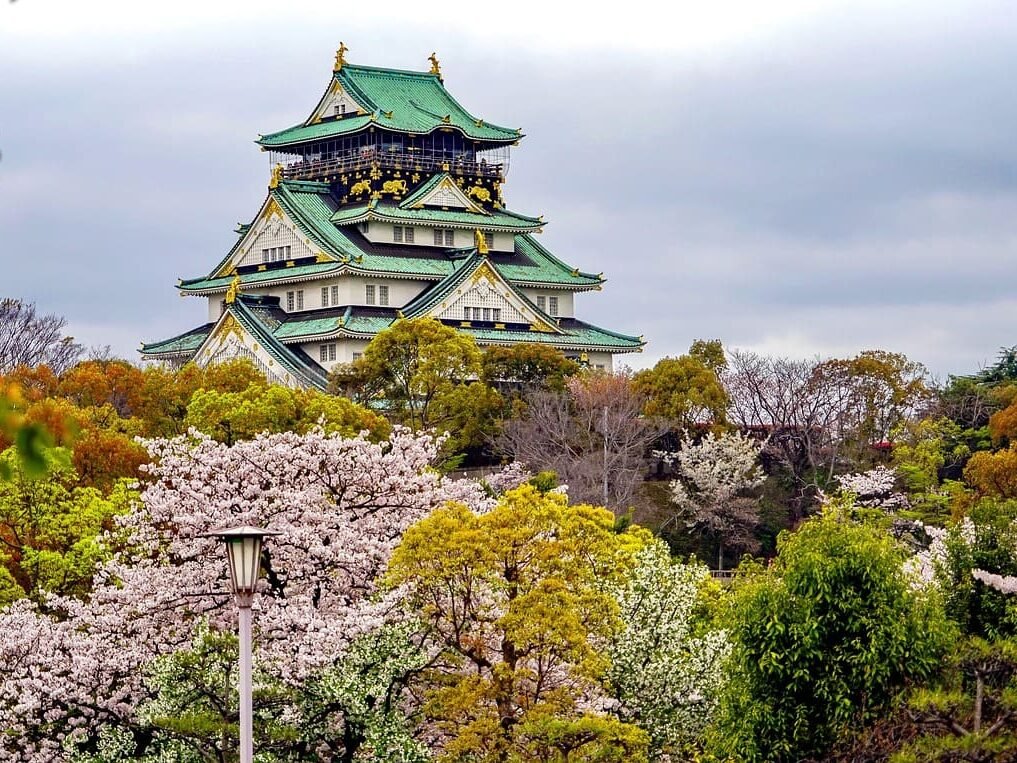
General Tips: Plan your trip according to the seasons, as each offers unique experiences. Spring is famous for cherry blossoms, while autumn provides stunning foliage.
Cultural Etiquette: Learn a few basic Japanese phrases and be mindful of local customs. Respectful behavior, such as bowing and removing shoes before entering a home or certain establishments, is appreciated.
Travel Essentials: Invest in a Japan Rail Pass for convenient and cost-effective travel between cities. Pack comfortable shoes, as you’ll be doing a lot of walking and exploring.
Safety: Japan is one of the safest countries for travelers, but it’s always wise to have travel insurance and be aware of your surroundings.
Booking Tips Using Travels Jinn Customization
Your honeymoon is just the beginning of a lifetime of adventures together. With Travels Jinn, planning your next dream vacation is simple and stress-free. Our platform offers personalized itineraries, expert guide, and seamless booking options to ensure your travels are as magical as your honeymoon.
In addition you will get instant translations and costs tracking services at your finger tips.
Do not waist your time, your perfect honeymoon is waiting for you!

